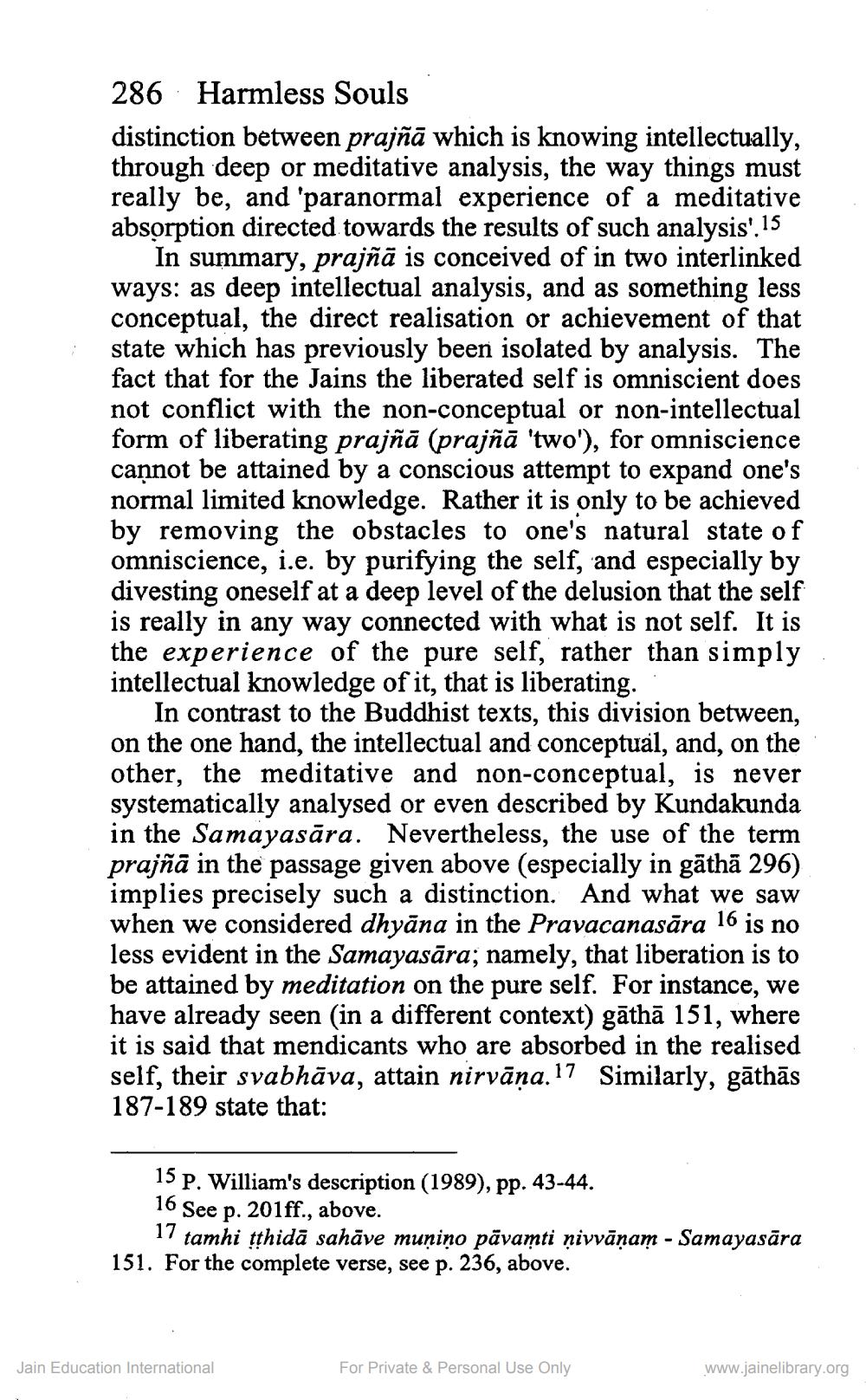________________
286 Harmless Souls distinction between prajñā which is knowing intellectually, through deep or meditative analysis, the way things must really be, and 'paranormal experience of a meditative absorption directed towards the results of such analysis'. 15
In summary, prajñā is conceived of in two interlinked ways: as deep intellectual analysis, and as something less conceptual, the direct realisation or achievement of that state which has previously been isolated by analysis. The fact that for the Jains the liberated self is omniscient does not conflict with the non-conceptual or non-intellectual form of liberating prajñā (prajñā 'two'), for omniscience cannot be attained by a conscious attempt to expand one's normal limited knowledge. Rather it is only to be achieved by removing the obstacles to one's natural state of omniscience, i.e. by purifying the self, and especially by divesting oneself at a deep level of the delusion that the self is really in any way connected with what is not self. It is the experience of the pure self, rather than simply intellectual knowledge of it, that is liberating.
In contrast to the Buddhist texts, this division between, on the one hand, the intellectual and conceptual, and, on the other, the meditative and non-conceptual, is never systematically analysed or even described by Kundakunda in the Samayasāra. Nevertheless, the use of the term prajñā in the passage given above (especially in gāthā 296) implies precisely such a distinction. And what we saw when we considered dhyāna in the Pravacanasāra 16 is no less evident in the Samayasāra; namely, that liberation is to be attained by meditation on the pure self. For instance, we have already seen in a different context) gāthā 151, where it is said that mendicants who are absorbed in the realised self, their svabhāva, attain nirvāṇa.17 Similarly, gāthās 187-189 state that:
15 P. William's description (1989), pp. 43-44. 16 See p. 201ff., above.
17 tamhi třhidā sahāve muniņo pāvamti ņivvāņam - Samayasāra 151. For the complete verse, see p. 236, above.
Jain Education International
For Private & Personal Use Only
www.jainelibrary.org




